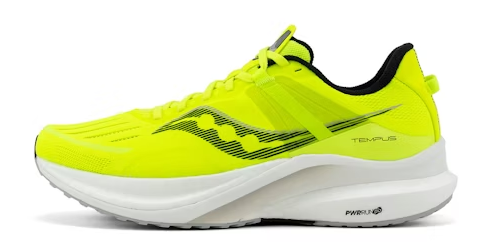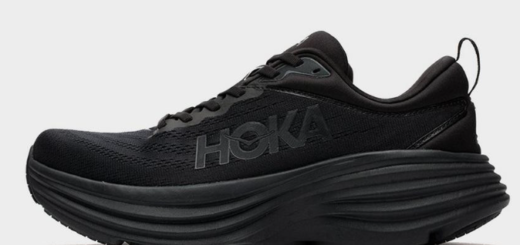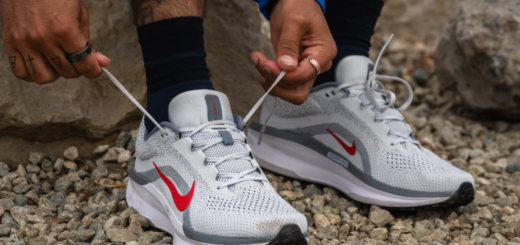Your Ultimate Guide to Selecting Comfortable Walking Shoes
Choosing the right walking shoes can make a world of difference in your comfort, mobility, and foot health. Whether you walk for fitness, errands, or leisure, the shoes you wear can either support you every step of the way or leave you dealing with pain and fatigue. This comprehensive guide will walk you through everything you need to know about picking the perfect pair of walking shoes—from identifying key features to ensuring a proper fit.

Key Features to Look For in Walking Shoes
Finding the best walking shoes starts with knowing what to look for. Not all shoes are created equal, and specific features can make a big impact on your overall comfort and performance.
A Secure Heel Fit
A well-fitting heel section is crucial for stability and motion control. The rear of the shoe should hold your heel snugly without being tight or causing discomfort. This helps prevent unnecessary movement that can lead to overpronation (rolling inward) or supination (rolling outward), both of which can affect your gait and cause long-term issues.
Spacious Yet Supportive Toe Box
The front of the shoe, known as the toe box, should provide ample room for your toes to move naturally. Your toes need enough space to flex and spread while walking. Shoes that are too tight can lead to blisters or bunions, while overly roomy ones may cause your foot to slide around, reducing stability.
Grippy Outsoles for Stability
The outsole, or the bottom layer of the shoe, is vital for traction. Shoes with textured patterns or grooves offer better grip on a variety of surfaces, helping to prevent slips or falls, especially in wet or uneven environments. A solid outsole also enhances the shoe’s durability and support.
Cushioned Midsoles
The midsole is the section between the shoe’s upper and the tread. This layer should offer soft, resilient cushioning to absorb the repetitive impact of walking. Materials like EVA foam, gel, or air pods provide shock absorption, reducing stress on your joints and allowing for a smoother stride.
Comfortable Insoles
Inside the shoe, the insole should conform to your foot’s shape and offer enough padding to enhance shock absorption. While some shoes come with removable insoles, you can replace them with orthotic inserts if you require additional arch support or cushioning due to foot conditions.
Breathable Materials
Shoes made with breathable fabrics such as mesh or engineered knit help maintain airflow and reduce sweat build-up. Proper ventilation keeps your feet cooler and drier, minimizing the risk of blisters and discomfort during extended walks.
Tips for Trying on Walking Shoes
Once you’ve identified the features that matter, the next step is trying the shoes on. How and when you try them can affect how well they fit.
Shop in the Afternoon or Evening
Feet tend to swell as the day goes on, which means they are usually at their largest in the late afternoon or evening. Trying on shoes during this time gives you a more realistic idea of how they’ll fit during actual use, especially on longer walks.
Bring Your Own Socks
Always try shoes on with the same type of socks you plan to wear while walking. Different sock thicknesses can significantly affect how a shoe fits. For the most accurate assessment, wear your usual walking socks to the store or when testing shoes at home.
Check Your Current Foot Size
Foot size can change over time due to factors like aging, weight changes, or pregnancy. Always measure both feet before purchasing new shoes. If one foot is slightly larger, opt for a pair that fits the larger foot more comfortably.
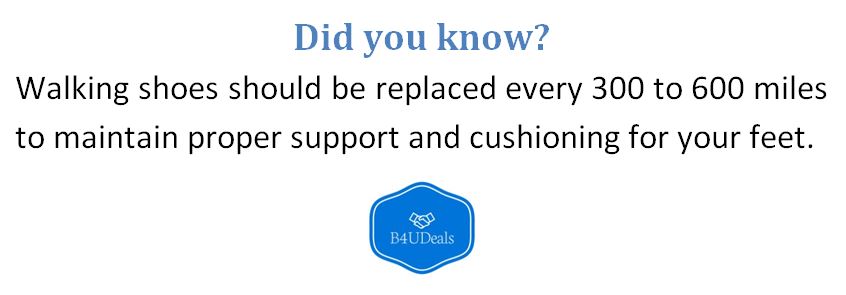
Test the Toe Space
When the shoe is on, wiggle your toes and check the distance between your longest toe and the end of the shoe. Ideally, there should be about a half-inch of space, which allows room for your toes to move and prevents pressure or discomfort.
Walk Around to Assess Fit
Don’t just stand in the shoes—walk around the store or your home. Pay attention to how the shoes feel in motion. Do they provide adequate arch support? Is there any rubbing or pinching? This real-world test can quickly reveal if a shoe is right for you.
Matching Shoe Types to Foot Shape
Everyone’s feet are different, and your shoe needs may vary depending on your foot shape and arch type. Understanding this can help you select a shoe that offers optimal support and comfort.
Shoes for Flat Feet
If you have low or fallen arches, look for shoes with motion control features and firm midsoles. These help stabilize the foot and reduce stress on joints and muscles. A straight-shaped sole (known as a straight last) is typically the most supportive option for flatter feet.
Shoes for High Arches
Individuals with high arches often lack natural shock absorption. In this case, choose shoes with extra cushioning and flexibility to reduce impact. A curved or semi-curved sole (curved last) works well for high-arched feet by promoting a more natural walking motion.
Shoes for Neutral Arches
For those with a neutral arch, moderate cushioning and good arch support are essential. Look for shoes with firm midsoles and a balanced design that supports the foot without over-correcting. Semi-curved soles often work best for this foot type.

Additional Tips for a Better Walking Shoe Experience
Beyond the structure of the shoe, there are a few more strategies to ensure lasting comfort and performance.
Consider Orthotic Inserts
If your shoes check all the boxes but still don’t feel quite right, custom or over-the-counter orthotic inserts may help. These can offer extra arch support, reduce pressure points, and improve alignment, especially if you suffer from plantar fasciitis or other foot conditions.
Know When to Replace Your Shoes
Even the best shoes wear out over time. Walking shoes typically last between 300 and 600 miles, depending on usage and quality. Keep an eye on wear patterns on the sole and pay attention to any new foot pain, which can signal that it’s time for a new pair.
Choose the Right Style for Your Needs
While comfort should be your top priority, it’s also important to pick a shoe suited to your activity level. For casual strolls, lightweight walking shoes work well. If you walk long distances or on rough terrain, opt for a sturdier pair with added support and protection.
Conclusion
Choosing the right walking shoes doesn’t have to be overwhelming. By focusing on essential features, taking the time to try on shoes properly, and matching your choice to your unique foot structure, you can find a pair that feels great from the first step to the last. Comfortable walking shoes aren’t just about luxury—they’re an investment in your long-term mobility and health.
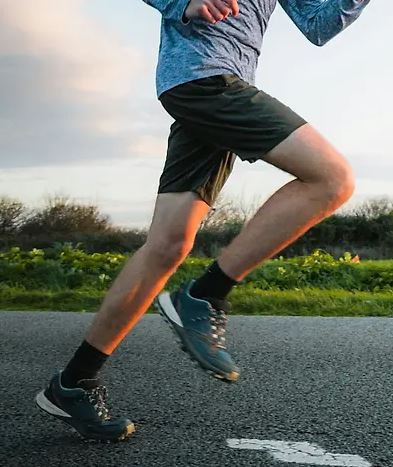
FAQs about Selecting the Right Walking Shoes
What makes a walking shoe comfortable?
A comfortable walking shoe offers proper heel support, a roomy toe box, cushioned midsoles, and breathable materials.
When is the best time to try on walking shoes?
Try them in the late afternoon or evening when your feet are slightly swollen for a more accurate fit.
How should walking shoes fit in the toe area?
There should be about a half-inch of space between your longest toe and the front of the shoe.
What kind of shoes are best for flat feet?
Shoes with motion control, firm midsoles, and a straight sole design provide the most support for flat feet.
Can I use orthotic inserts with walking shoes?
Yes, inserts can enhance comfort and support, especially for those with arch issues or foot pain.
How often should walking shoes be replaced?
Replace walking shoes every 300 to 600 miles or when you notice signs of wear or discomfort.

